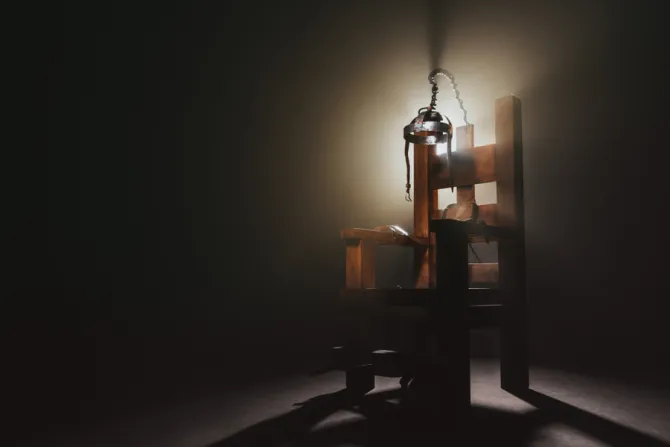Richmond, Va., Sep 24, 2019 / 13:00 pm
The Virginia Catholic Conference has spoken in support of public accountability in the administration of the death penalty, while calling for an end to its use.
In a statement given in response to questions about a lawsuit demanding that the public be able to view the entirety of the execution process in capital cases, the conference stressed the importance of "public accountability."
The suit, filed Sept. 23 in a U.S. District Court, was brought by several news media organizations. It argues that Virginia's Department of Corrections violates the First Amendment by blocking public view of certain steps in the execution procedure, and that public oversight is an essential safeguard for prisoners' rights.
The Virginia Catholic Conference, which speaks on behalf of the state's two bishops, Bishop Barry Knestout of Richmond and Bishop Michael Burbidge of Arlington, stressed the importance of the issues at stake.
In a statement to CNA Sept. 24, conference executive director Jeff Caruso said "As long as we continue to have the death penalty in Virginia, it is important to have public accountability for how the state exacts the ultimate punishment."
"More importantly, Virginia should seek ways to curb and ultimately end its use of the death penalty."
Virginia's execution manual was updated in 2017, the same year as the state's last execution. The update was ordered following concerns about the amount of time it took to place an IV line in convicted murderer Ricky Javon Gray. Gray was the second-most recent execution in the state.
The suit, brought by several media outlets, including the Associated Press, Guardian News & Media LLC, BH Media Group, and Gannett Co. argues that the new protocol prevents journalists from ensuring that the rights of the prisoner are not violated during the execution process.
The updated rules require that a curtain be drawn over the execution chamber's observation window prior to the inmate entering the room. This curtain is to remain closed until the condemned inmate is either strapped to a gurney and given an intravenous line, or, in the case of prisoners to be electrocuted, until the inmate is secured in the electric chair and three unspecified actions are performed.
Prior to 2017, the curtains were drawn over the observation window only during the placement of the IV and heart monitors on the inmate.
"These limits on witnesses's ability to view Virginia's executions severely curtail the public's ability to understand how those executions are administered, or to assess whether a particular execution violates either the Constitution or the state's prescribed execution procedures, or is otherwise botched," said the lawsuit.
The suit requests a court order to remove the curtains from the observation room, so that an execution can be viewed from start to finish.
Since the death penalty was once again made legal, Virginia has executed 113 people, either through lethal injection or electrocution. There are presently two people on Virginia's death row.
In the decades following the reinstatement of the death penalty, there has been one person released from Virginia's death row after being exonerated. Ten other formerly condemned prisoners have been granted clemency.
Subsequent to the publication of this article, the Virginia Catholic Conference clarified its comments to explain that while it supports public accountability in the administraiton of the death penalty, it does not take a position on legal cases to which it is not a party. The article has been updated to reflect this.



